Title: Education for Modeling and Simulation: Emerging Needs and Recent Trends
Abstract: Modeling and simulation (M&S) are becoming increasingly pervasive across multidisciplinary areas of mechanical engineering, design engineering and data science, whilst offering methods and tools for rapid design and modeling, cost-saving simulation, effective visualization, robust analysis, and communication across technical boundaries.
The landscape of this emerging field has been undergoing major changes as we transition from M&S of systems in the current era (e.g., internal combustion engines, planes, etc.) to modern systems (e.g., digital twins, robotics, additive manufacturing, quadcopters, drones, etc.) of the present and future. The complexity of models, model usage, and work environment has changed radically over these years. This raises the question of whether the educators are adequately preparing the engineering graduates with the proper M&S skills and academic requirements of the next generation.
In this panel, we will hear from experts in the industry, academia, and government about how the digital- and advanced technology trends and needs are changing the educational of M&S. Is the new workforce is properly skilled and trained for M&S adoption, integration and application? What are the respective revisions and interventions to be incorporated into the teaching and learning curricula at the undergraduate and graduate levels?
Furthermore, the panel will discuss the advancement of remote teaching, hybrid learning and on-line education in the event of potential outbreak of airborne diseases, pandemics or prevention of disease transmission.
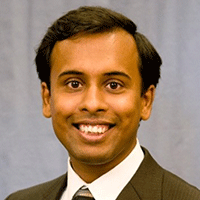
Dr. Gaurav Ameta is a Senior Key Expert at Siemens Technology, USA. He leads technology vision for design representations and advanced manufacturing areas at Siemens Technology. He also serves as an associate editor for the Journal of Computing and Information Science in Engineering (JCISE). Before joining Siemens in 2018, Dr. Ameta had served as associate professor and assistant professor at universities in India and the United States. He was also a guest researcher at the National Institute of Standards and Technology, USA. He obtained his Ph.D. and MS from Arizona State University, USA, in 2006. His research interests include geometric algorithms, CAD/CAM, tolerancing, additive manufacturing and sustainable product design. He has published over 80 research articles. He was a recipient of Young Engineer Award from American Society of Mechanical Engineers, Computer and Information in Engineering Division in 2011 and several best paper/poster awards for his publications.
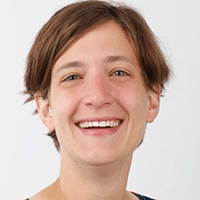
Dr. Daniela Faas was the senior preceptor in design instruction at the John A. Paulson School of Engineering and Applied Science at Harvard University, prior to joining Olin College. Dr. Faas was a Shapiro postdoctoral fellow in the Mechanical Engineering Department at MIT after receiving her Ph.D. in Mechanical Engineering and Human-Computer Interaction from Iowa State University, developing low-cost immersive Virtual Reality applications for products and systems. Dr. Faas graduated from Bucknell University with her M.S. in Mechanical Engineering and joint B.S./B.A. in Mechanical Engineering and International Relations. Dr. Faas is currently a research affiliate in the Department of Mechanical Engineering at MIT. Her research focuses on the early-stage design process and methodology and engineering education with a focus on fabrication and prototyping in the classroom.
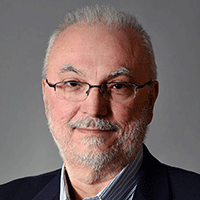
Dr. John Michopoulos is a Research Scientist/Engineer and head of Computational Multiphysics Systems Lab (CMSL) Code 6394, of the Center for Material Physics and Technology at the US Naval Research Laboratory (US-NRL), Dr. Michopoulos executes and oversees multi-physics modeling and simulation efforts and computational sciences research and development, operations and initiatives at CMSL. Some of his major initiatives include research and development on linking material performance to material processing via data and specification driven methodologies, additive and hybrid manufacturing process and material modeling, model order reduction for naval applications, electromagnetic launcher dissipative damage modeling and simulation, mechatronic/robotic data-driven characterization of continua, multiphysics design optimization and meta-computing. He is a member of the editorial board of several scientific journals and is member of the program committee of several international conferences and has chaired several of them. He has served in the executive committee of the Computers and Information in engineering division of the ASME. His technical work and leadership have been recognized by several national and international honors, including the 2015 Excellence in Research award by ASME’s CIE division, the 2015 Innovator Award by Wolfram Inc., and the 2013 “P.S. Theocaris” award for excellence by the National Academy of Athens. He has authored and co-authored more than 370 publications and patents. Dr. Michopoulos holds a Diploma/M.Sc. in Civil Engineering and a Ph.D. in Applied Mathematics and Mechanics from the National Technical University of Athens and has pursued post-doctoral studies at Lehigh University on computational multi-field modeling of continua and Fracture Mechanics.
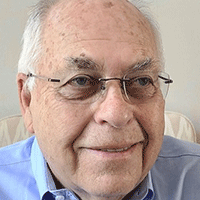
Michael Payne was born in the UK. He received as BSc. In Electronic Engineering from Southampton University, an MSc. From Kings College, London in Physics of Semiconductor and Vacuum Devices, and an MBA from Pace University in New York. He has worked at Plessey Radar in the UK, where he was involved in the design or electronics for Radar Systems. Later he worked on various topics at RCA in NJ including semiconductors for a military program. He had various positions at Prime Computer, including the Director of CADCAM development. With Sam Geisberg and Danny Dean he went on to start the Company that became known as Parametric Technology (PTC). After PTC, with others he was a founder and VP R&D for SolidWorks which was acquired by Dassault Systèmes. He became the CEO of the Spatial, a Dassault Systèmes Company. With 3 others, he was a founder of SpaceClaim, now an Ansys Company. Currently he is CEO of Kenesto, which produces a cloud-based software product for the Construction Industry.
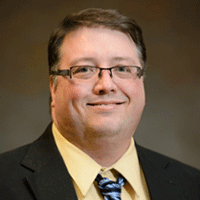
Dr. Cameron Turner is an Associate Professor of Mechanical Engineering at Clemson University where he runs the Design Innovation and Computational Engineering Laboratory (DICE Lab) as part of the Clemson University Design Automation Research (CEDAR) Group. He has previously been on the faculty of the Colorado School of Mines for 7 years and was a technical staff member at Los Alamos National Laboratory for 13 years. Dr. Turner's research focuses on the use of computational tools to collaborate with engineers during the design and manufacturing process, including simulation, modeling, optimization, and artificial intelligence to facilitate CAD/CAM/CAE operations. Currently, Dr. Turner is primarily involved with the Virtual Prototyping for Ground Vehicle Systems (VIPR-GS) Center at Clemson University. VIPR is a $100M+ effort with the US Army Ground Vehicle Systems center to dramatically advance the design capabilities and use of virtual design in the development of the next generation of US Army vehicles. Through this center, Dr. Turner serves as the Principal Investigator for the Tradespace Exploration, Analysis and Decision-Making and the Cross-cutting Tradespace Techniques for Ground Vehicle Systems projects (totaling approximately $3M), and serves as a co-PI on four other projects within the VIPR center.